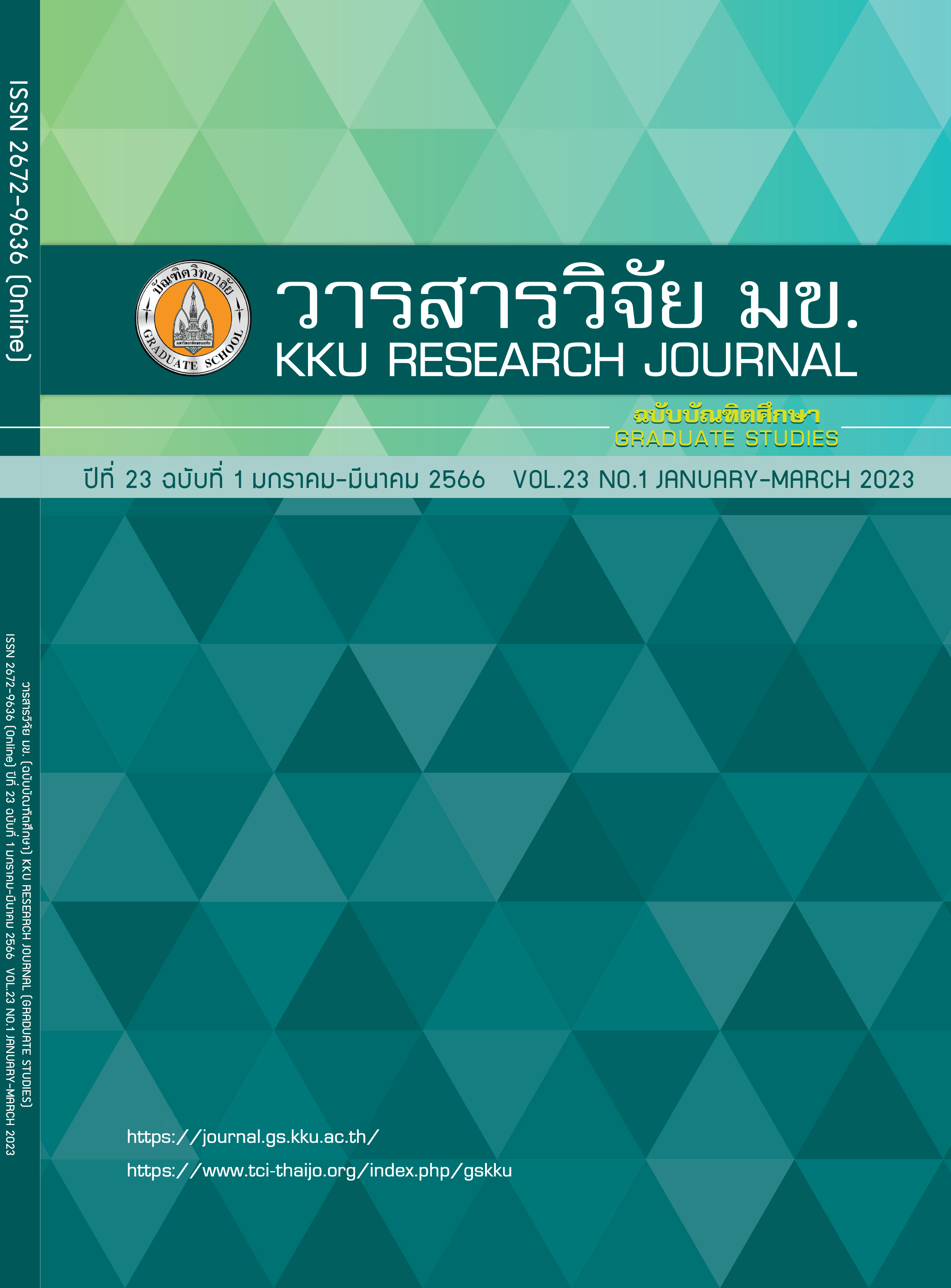The Effect of Sodium Hydroxide Solution with Seawater on Compressive Strength of Geopolymer
Keywords:
Geopolymer, Compressive strength, Sodium hydroxide solution, SeawaterAbstract
This research study the effect of sodium hydroxide solution with seawater to compressive strength of geopolymer. The ingredients are fly ash from Mae Moh Power Plant Lampang Province, sodium silicate solution (NS), Sodium hydroxide (NaOH) solution and seawater on the coast of Chonburi province. The test divided the test series as follows : 1.Series A: Change the solution to fly ash ratio (L/F), 2.Series B : Change the sodium silicate solution to sodium hydroxide solution ratio (NS/NaOH) and 3.Series C : Changes in the concentration of sodium hydroxide solution (NaOH). Test compressive strength of geopolymer at the age of 28 days. The test results Series A which changed the L/F from 0.5 to 0.7 showed that as the L/F increased the compressive strength was reduced. The highest compressive strength test results are in the L/F ratio = 0.50 using a solution of sodium hydroxide from seawater (NaSE) =100% Compressive strength of 463.89 kg/cm2. This has a higher compressive strength than samples using a solution of sodium hydroxide from distilled water (NaDI)=100% slightly equal to 442.36 kg/cm2. The test results Series B which changed the NS/NaOH ratio from 0.33 to 0.67 showed that as the NS/NaOH ratio increased compressive strength increased and as the NS/NaOH ratio increased from 0.67 to 1.50 compressive strength decreased. The highest compressive strength test results are in the NS/NaOH=0.67 which NaDI=100% (508.02 kg/cm2) higher compressive strength than NaSE=100% (506.40 kg/cm2) slightly. And the test results Series C which changed in the concentration of sodium hydroxide solution increasing from 5 to 10 molar compressive strength capacity was found to increase as the intensity increased from 5 to 10 molar but when the concentration was higher than 10 molar the compressive strength decreased.
References
The office of industrial economics Thailand(e-Statistic) [Internet]. 2020 [updated 2019 Oct 19; cited 2021 Feb 10]. Available from: https://indexes.oie.go.th/industrialStatistics1.aspx
Minerals Yearbook (USGS) [Internet]. 2016 [updated 2019 Jan 10; cited 2020 Apr 5] Available from: https://minerals.usgs.gov/minerals/pubs/myb.html
Rattanasak U. Geopolymer :Thailand Concrete Association; 2017
ASTM C618-19. Standard Specification for Coal Fly Ash and Raw or Calcined Natural Pozzolan for Use in Concrete, ASTM International, West Conshohocken, PA, 2019
Rattanasak U, Chindaprasirt P. Influence of NaOH solution on the synthesis of fly ash geopolymer, Miner. Eng. 2009; 22 (12): 1073–1078.
Posi P, Ridtirud C, Ekvong C, Chammanee D, Janthowong K, Chindaprasirt P. Properties of lightweight high calcium fly ash geopolymer concretes containing recycled packaging foam. Construction and Building Materials. 2015; 94: pp.408-413
ASTM C109-21. Standard Test Method for Compressive Strength of Hydraulic Cement Mortars (Using 2-in. or [50 mm] Cube Specimens), ASTM International, West Conshohocken, PA, 2021
Posi P, Teerachanwit C, Tanutong C, Limkamoltip S, Lertnimoolchai S, Sata V, et al. Lightweight geopolymer concrete containing aggregate from recycle lightweight block, Mater. Des. 2013; 52: 580–586
Rols S, Ambroise J, Péra J. Effects of different viscosity agents on the properties of self-leveling concrete, Cem. Concr. Res. 1999; 29 (2): 261–266.
Wongpa J, Kiattikomol K, Jaturapitakkul C, Chindaprasirt P. Compressive strength modulus of elasticity and water permeability of inorganic polymer concrete, Mater. Des. 1999; 31 (10): 4748–4754.
Kharita MH, Yousef S, AlNassar M. The effect of the initial water to cement on shielding properties of ordinary concrete, Prog. Nucl. Energy. 2010; 52 (5) 491–493.
Eiamwijit M, Pachana K, kaewpirom S, Rattanasak U, Chindaprasirt P. Comparative study on morphology of ground sub-bituminous FBC fly ash geopolymeric mater. Advanced Power Technology. 2009; 26(4): 1053-1057
Downloads
Published
Issue
Section
License
Copyright (c) 2023 KKU Research Journal (Graduate Studies)

This work is licensed under a Creative Commons Attribution-NonCommercial-NoDerivatives 4.0 International License.



